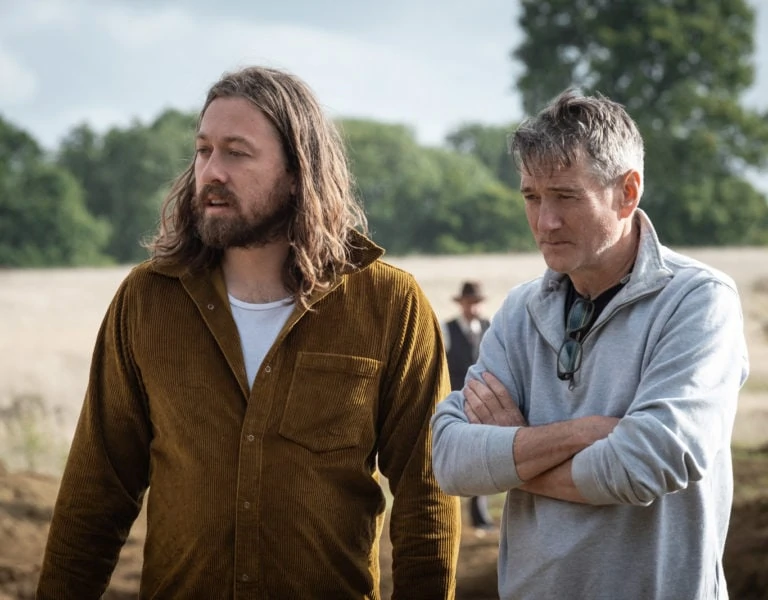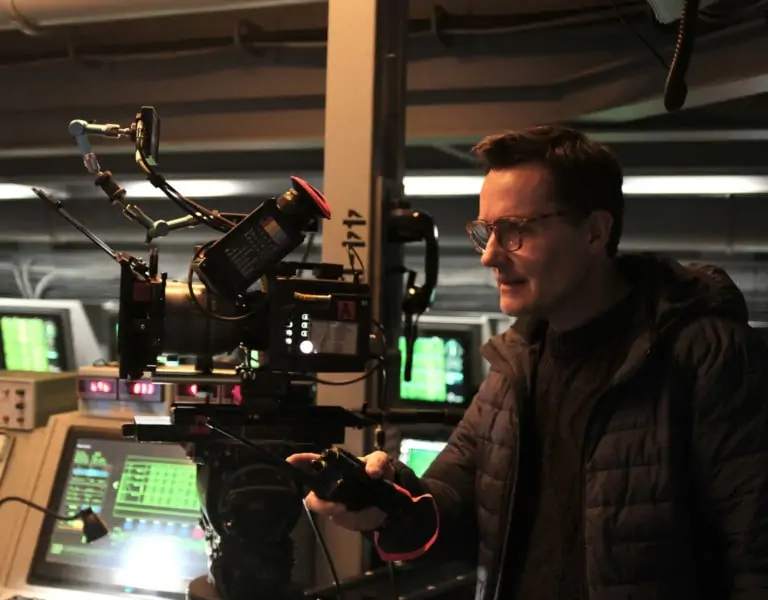STORY FIRST
The Long Goodbye, an impactful production conveying an important and timely message, deservedly won Best Live Action Short Film at this year’s Oscars. Stuart Bentley BSC shares how the film was crafted and why it demonstrates that the value of passion and commitment to powerful and honest storytelling far outweighs budget.
“Over the years I’ve come to realise that there’s no direct correlation between budget and quality,” says Stuart Bentley BSC. “When I started making films, I probably had a misconception that big budgets, loads of kit and large crews equated to good films.”
Testament to that is The Long Goodbye, the low budget production, shot by Bentley and a small crew using a stripped back camera package and lighting which won Best Live Action Short Film at this year’s Oscars.
Bentley hopes the film’s award wins will encourage young filmmakers. “You need a powerful story, a committed and talented cast, director, and crew. It’s exciting that these days you can make amazing films with such limited resources, and I believe that has democratised filmmaking.

“When I shoot productions with lots of fancy equipment, I quite often long to get back to the basics. I want handheld camera, to see in every corner of the room, and to capture a performance in the way the director and cast want.”
Many films are remembered for their performance and story, and Bentley considers it his responsibility as a cinematographer to facilitate that. Without wanting to downplay the role of lighting, or a technical camera move, he feels, “first and foremost, if the cinematography is story driven that’s part of what can make a film successful, and The Long Goodbye is evidence of that.”
Co-written and directed by Aneil Karia and produced, co-written, and starring Riz Ahmed, the 12-minute short imagines a dystopian near-future. Inspired by Ahmed’s 2020 concept album The Long Goodbye, the film reflects on Britain’s post-Brexit relationship with South Asians and British Asians and the racism and hatred that sadly still exists.
Incorporating music from the album and divided into three parts, the film begins by capturing the bustling and joyous atmosphere of a South Asian family home in London as wedding preparations are made. The harmony is shattered when an all-white militia arrive to terrorise the family. Following an ambush and devastating attack, the film culminates with Ahmed delivering a powerful monologue, direct to camera.
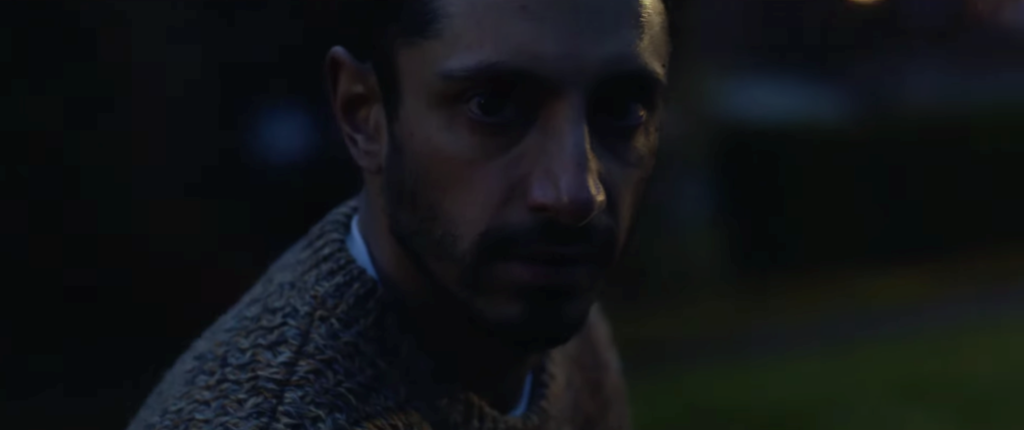
Making a positive change
As the subject at the heart of the film is sensitive and complex, it was imperative that the story told, and message communicated were handled with care by the cast and filmmakers. “At times I feel dismay at the direction society is going, the lack of care and empathy shown for each other, and the increase in hate crime, racism, and homophobia,” says Bentley. “I feel strongly about human rights, equality, and – it sounds basic – but just generally being kind to each other – that’s why it was important to be part of telling this story.”
Working in the entertainment industry has seen Bentley shoot a wide variety of types of production but “it was an honour to have the opportunity to help make something so powerful and political.” Referring to filmmakers and artists who use their creativity to express political and personal opinions, he highlights the importance of “maintaining that hunger to try to make a positive change.”
As well as having a fruitful working relationship, Bentley and director Aneil Karia are close friends. After attending film school together, they shot music videos before also moving into commercials and short films. Prior to teaming up for The Long Goodbye, Bentley lensed Karia’s feature debut, the Sundance award-winning thriller Surge (2020) about a security guard who suffers a mental breakdown.
With the filmmakers’ careers having developed in unison over the years, Bentley believes the pair’s relationship and style are helped by a “shared taste in film and music and references that have been inspirations and are now ingrained” in the way they work.

After Karia approached Bentley with the concept for The Long Goodbye, they hit the ground running, initially aiming to film over two days in East London. But when the London Bridge terror attack took place three days before shooting commenced, the film council in the area shut the shoot down and the plans had to change.
“It’s such a sensitive subject and complex and challenging film – the local film council was reluctant for us to shoot the film there,” says Bentley.
Despite the lack of time to find a new location and transfer all prep to a new house and street, production manager Maddy Perkins ensured the shoot could proceed in a street in Leatherhead. “There was no time for a recce, and as we were shooting on the two shortest days of the year there was little available light and a lack of resources or budget to light day for night,” says Bentley. “So, we just had to shoot as quickly as possible, resulting in complex and challenging scheduling.”
Fortunately, Bentley and Karia’s background in music videos came into play, allowing them to move quickly and adopt the light and flexible approach they have fine-tuned over the years. “We generally try to avoid too many huge technical complex sequences,” adds Bentley. “Ultimately, it’s performance driven and for this film, we chose more of a documentary-style approach.”
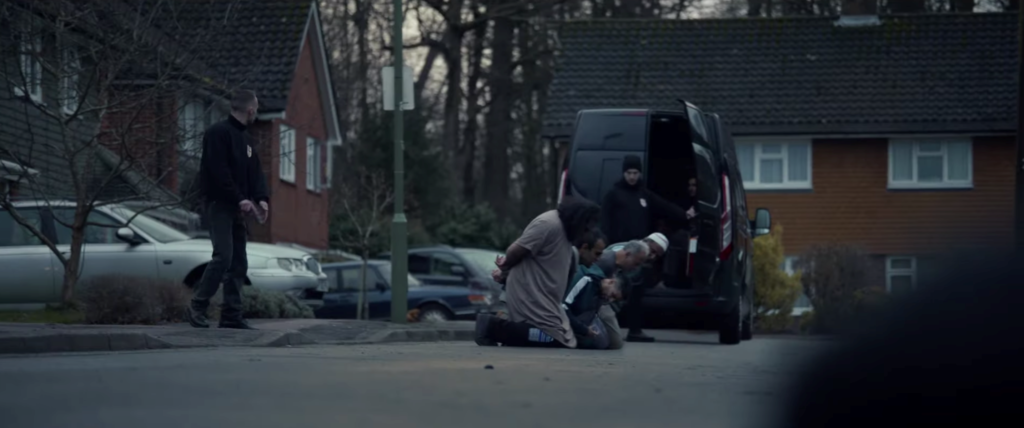
Propelling the story
The shape of the key sequences was discussed broadly in the initial stages of planning, with the filmmakers exploring how to visually represent the first act which begins downstairs in a family home and exudes a warm and vibrant atmosphere. Introducing a feeling of chaotic family life through the audio of this chapter was also critical and was achieved through incorporating different levels of volume and people talking in various rooms.
When the positive environment is shattered by the ambush, it drastically shifts the direction of the story. “Creating that feeling was not necessarily just about what we did visually through the camera, lenses or lights,” says Bentley. “It was about managing the atmosphere on set and creating a space the actors could inhabit without feeling the presence of a film crew. In turn, this would produce an energy that filters through into the image.”
Due to the varying amounts of improvisation and flexibility available, it has not always been possible for Bentley and Karia to give the actors unrestricted space to express themselves, but on The Long Goodbye, the set was dressed in a 360-degree manner to allow free movement. With the early sequences focused on capturing the household’s energy, a fluid camera was chosen to allow the cast to project that vitality whilst making them feel liberated in the space.

“Everything was very stripped back and lightweight and we just had a few practicals and a handheld camera. There was never any suggestion of marking or blocking notes,” says Bentley. “One of the only more technical and controlled shot was when Riz looks out of the window and sees the vans approaching. We knew we needed a clear line of sight for that and that it had to be an eyeline that worked to tell that story.”
Bentley and Karia wanted a slightly obscured eyeline, so the viewer is unclear what is happening and creating a feeling of unease whilst elevating the tension. “This helps engage the viewer and makes them want to know more. So, the fleeting moment when the van arrives and the sound accompanying that provides just enough information to create tension to propel the story.”
In line with Bentley’s need for a small and lightweight camera, he shot on the ARRI Alexa Mini and rehoused K35 lenses – primarily the 35mm and 50mm. This fulfilled his desire for a documentary-style camera that allowed him to “move fluidly, essentially dancing with the cast and following them through the space.”

Bentley has a passion for operating the camera, “responding to the energy and understanding what atmosphere the cast and director are trying to create. You’re in this amazing position in the front row of the most incredible performance, and you get to respond to that in real time. It’s this fantastic marriage of music, rhythm, drama, movement, dance, and the technicalities of the lens and lighting.”
The rapid camera movement deployed in the early scenes increases when the raid occurs and the film “transforms from something that’s already quite a high energy camera to an almost unbearably high energy camera” before the tempo shifts in the final sequence.
“This is one of the reasons why watching the film is such an intense experience,” says Bentley. “First and foremost, there are incredible performances and a devastating story, but there is also a stressful approach to the camerawork which intensifies the viewer’s impression of the story, creating a tense, hectic energy.”
Some previous productions Karia and Bentley have collaborated on feature some form of release. They might cut to a static wide or a more measured and slower sequence. “But on this film, it felt appropriate that there was almost no release, and that the energy was consistent. It was just this relentless, energised movement that barrels along and works with the track. Ultimately, there is also the music element to the film, so we also needed to synchronise with that.”
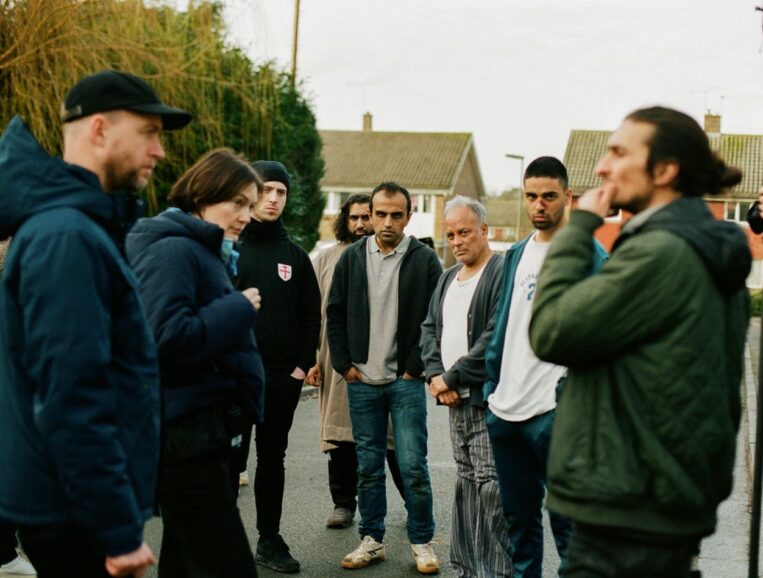
Raw power, heart, and integrity
The relationship between the cast and available light sources played a significant part in the film’s visual success, with natural light through windows and practicals illuminating the space and actors. “It’s then about where you position yourself in relation to the cast and the light,” says Bentley. “Do you shoot towards the windows, so you get the nice three-quarter wrap around backlight, or do you turn around for more frontal light?
Bentley collaborated with a small lighting crew who were already accustomed to the way he and Karia work. “We had a very simple lighting package, and on the day, the lighting team were standing by, aware there wouldn’t be a huge amount of equipment needed. This basic set-up reinforces that you don’t need a lot of kit or crew and can produce powerful results using stripped back techniques.”
Opting for a mixed colour temperature look, Bentley and the team combined the cooler available daylight shining through windows with warm practicals. For the sequence upstairs which sees the females in the family chatting, a small domestic top light in the house was incorporated.
The lack of available light also influenced Bentley’s decision to shoot Canon K35 prime lenses which gave the image “an ever so slightly textured quality and were fast enough to perform in low light.”
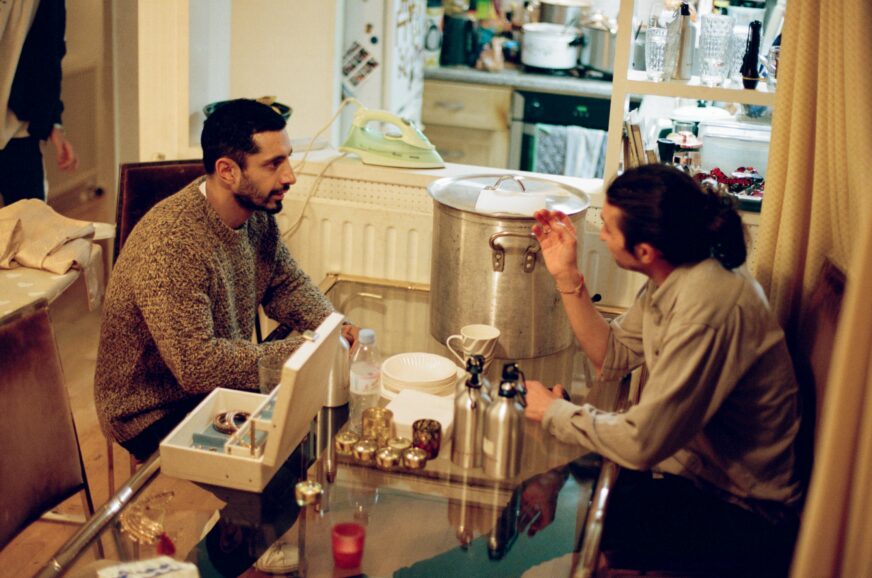
The cinematographer also frequently checked exposure throughout multiple long continuous takes which might see him begin in one room that was a little more underexposed than others. “It was reassuring knowing the information was there so when we got into the grade it could be restored, brightened or darkened to match, making the edit more seamless,” he says.
Dynamic grading was carried out by colourist Simone Grattarola, who Bentley and Karia had teamed up with for Surge along with repeat collaborator editor Amanda James. During this process “grain was added, and some shots were dynamically brightened or darkened as the scene developed, whilst not pushing things too far so the film remained in tune with a naturalistic approach.”
As Grattarola was already in tune with the way Karia operates, his tastes and sensibilities, creative conversations flowed naturally from Surge and previous short films they had crafted in partnership. “That framework and shorthand is already there to inform how we approach each project,” says Bentley. “The grade, like the camerawork, lighting, edit, and performance came from a very realistic place.”
Bentley believes The Long Goodbye has been well received because it is truthful, impactful, and delivered with conviction: “It has such raw power, heart, and integrity which resonates with people. It’s a challenging film and a difficult watch, but I think that’s important. Films like this should be cherished and applauded.”

This echoes the sentiment of Ahmed’s Oscar acceptance speech in which he said: “In such divided times, we believe that the role of story is to remind us there is no ‘us’ and ‘them’. There’s just ‘us’. This is for everyone who feels like they don’t belong. Anyone who feels like they’re stuck in no man’s land. You’re not alone. We’ll meet you there. That’s where the future is. Peace.”
Commenting on the film’s Oscar win, Bentley adds: “It’s testament to Aneil and Riz’s energy, talent passion, and commitment to powerful and honest storytelling. They’re so talented and I am thrilled to have been a small part of that filmmaking journey.
“As always, I couldn’t have done this without the fantastic camera and lighting crew – Trey Joel Roberts, Adam Conlon, Evelina Engberg Norgren, Bill Rae Smith, Carmen Pellon Brussosa, Kit Wood, Tamar Mankassarian, Joe Lovelock, and everyone else involved.”



